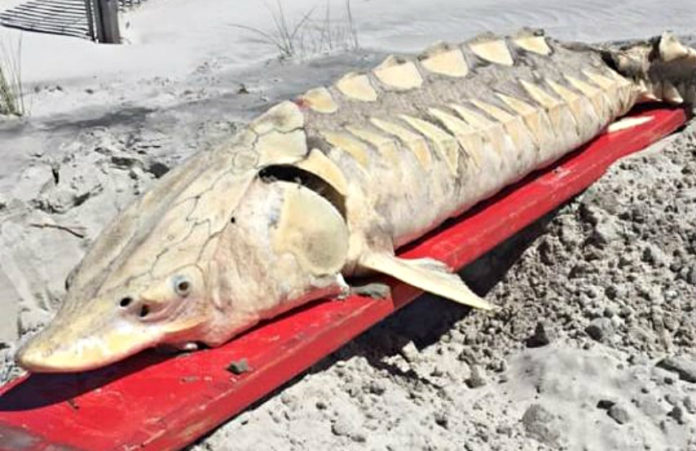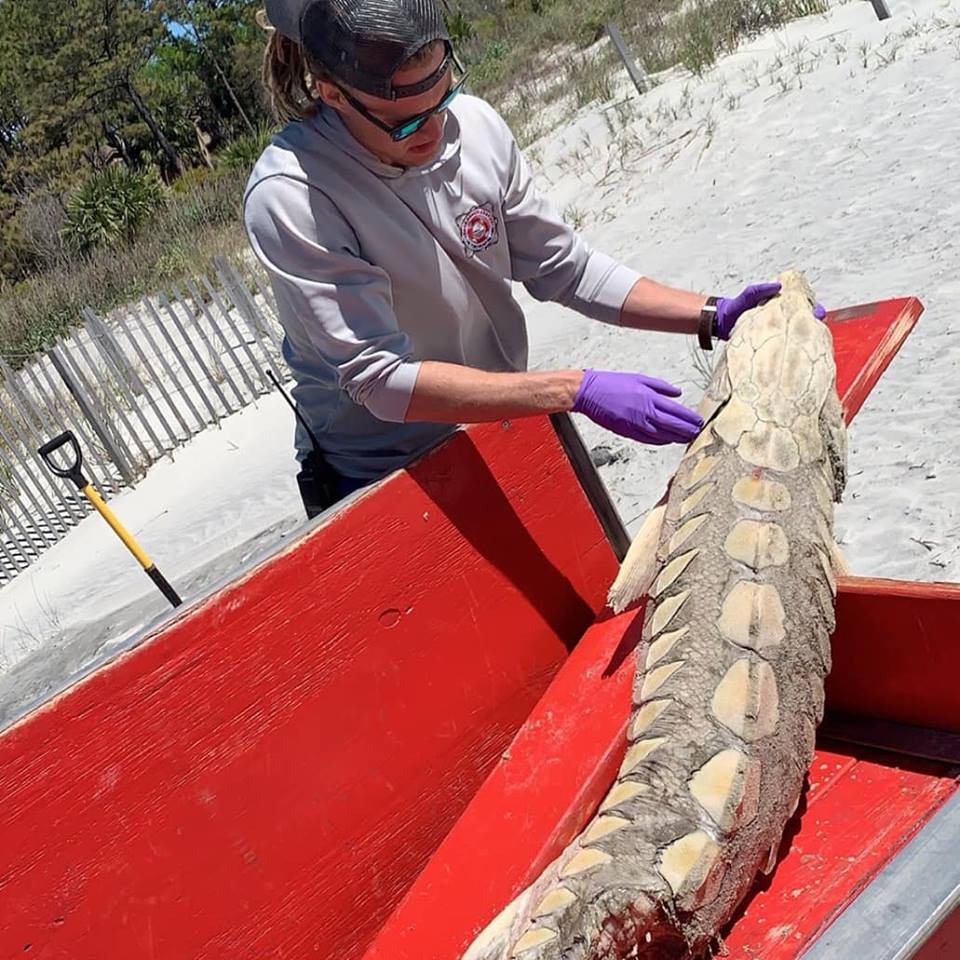
[published April, 2019]
Beachgoers were in for a surprise on Easter morning when a bizarre looking prehistoric fish washed ashore in Beaufort County near South Forest Beach on Hilton Head Island.
The rare Atlantic sturgeon measuring nearly 5 feet long was found around 1130am on Sunday morning and was picked up by staff from Shore Beach Services, who patrols over 13 miles of beaches on the island.
A sturgeon washing up on a beach is pretty rare because sturgeon are pretty rare.
“We see them maybe a few times a year at best,” said Mike Wagner of SBS. “They’re not what people typically see washed up on the beach, and this one appears to have just recently died which makes it more easily identifiable.”
They are quite rare indeed. To see this one washed ashore must have been a sight for Easter Sunday beachgoers.

Known to live to be over 60 years old, grow to 14 feet in length and weigh up to 800 pounds, the sturgeon is indeed a prehistoric species. They appear in the fossil record more than 200 million years ago and are commonly referred to as ‘a living fossil’.
Why so rare?
A century ago, in the late 1890s, there was a huge fishery for sturgeon all over the East Coast revolving around harvesting of the eggs for caviar. It was so popular, it was dubbed ‘The Black Gold Rush’.
According to NOAA Fisheries, Atlantic sturgeon were once found in great abundance, but their populations have declined greatly due to over-fishing and habitat loss. Atlantic sturgeon were prized for their eggs, which were valued as high-quality caviar. During the late 1800s, people flocked to the Eastern United States in search of caviar riches from the sturgeon fishery.
By the beginning of the 1900s, sturgeon populations had declined drastically. Close to 7 million pounds of sturgeon were reportedly caught in 1887, but by 1905 the catch declined to only 20,000 pounds. By 1989 only 400 pounds of sturgeon were recorded.
Sturgeon are born in the freshwater or brackish water estuaries along the SC coast, particularly in the Edisto, Savannah and Pee Dee Rivers, and head to the ocean after a few years to mature. Atlantic sturgeon are the largest fish living in freshwater on the entire Atlantic coast. During the mid-1970s, half of the US landings of Atlantic sturgeon came from South Carolina. The sturgeon fishery in South Carolina was officially closed in 1985
Today, all five U.S. Atlantic sturgeon population segments are listed as endangered under the Endangered Species Act.
You’ve heard the term ‘a dinosaur washed up on the beach’.
This is the real deal.









